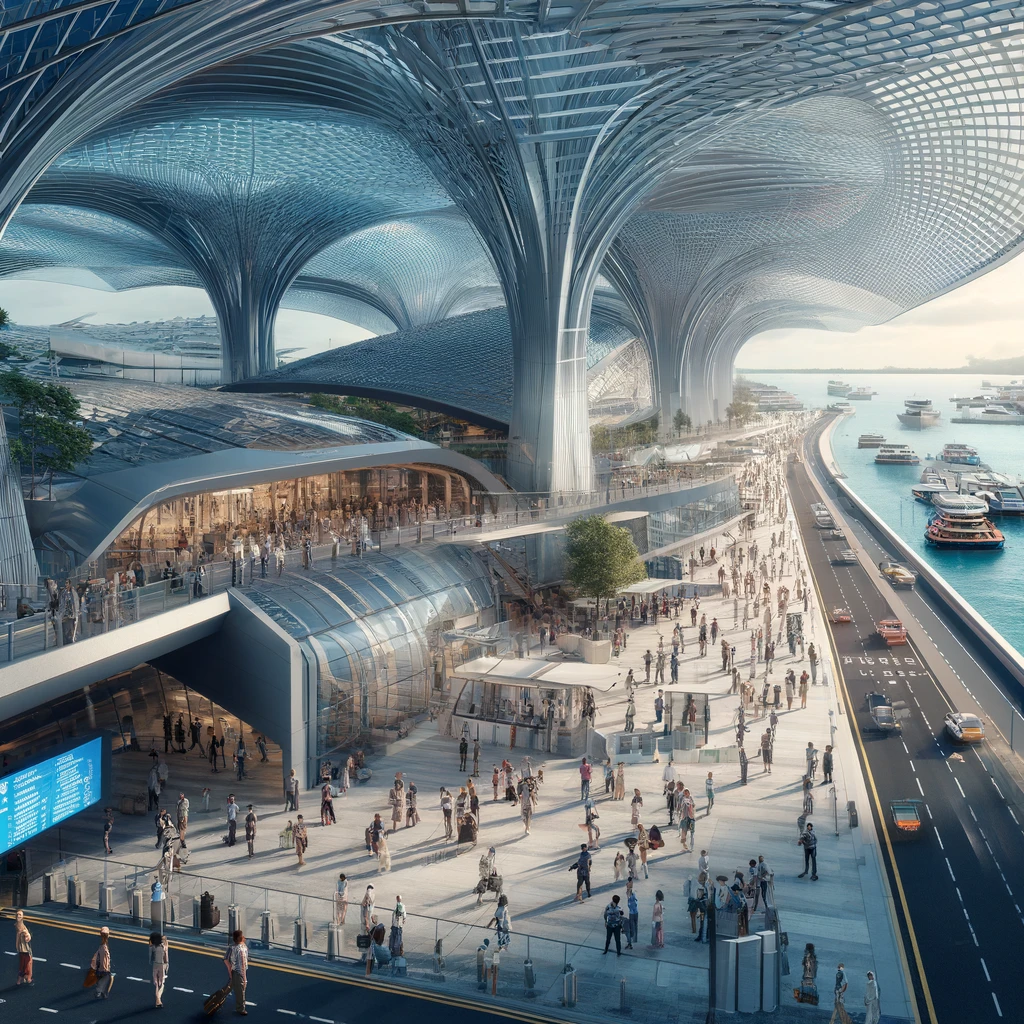Transforming the Singapore Cruise Centre with Digital Architecture

The Singapore Cruise Centre (SCC) has been a cornerstone of maritime passenger services since its inception in 1991. Owned entirely by Maple Tree/Temasek, SCC operates international cruise and regional ferry terminals with a vision to be the world’s leading cruise and ferry terminal operator. Their mission encompasses providing efficient, innovative, and safe terminal services, enhancing waterfront developments, and being a preferred international partner in terminal management and consultancy.
Their Transformation Journey
In the ever-evolving landscape of maritime passenger services, SCC is dedicated to modernizing their operations and enhancing the customer experience. This commitment is evident in their adoption of the Cruise and Ferry Operating System (CFOS), the Integrated Operations Center (IOC), and a focus on digital twins for operational management. These technologies and strategies are part of their broader digital transformation aimed at improving efficiency and security while fostering sustainable practices.
Role of Digital Architecture in Their Journey
Digital Architecture (DA) plays a pivotal role in their transformation by providing a structured approach to integrate and optimize their technological and operational frameworks. DA acts as the backbone that supports SCC’s alignment with their strategic business goals, ensuring that their IT landscape not only supports but also drives their business objectives forward.
Components of Their Digital Architecture
Their DA is composed of several key components:
- Business Architecture (BA): Aligns IT infrastructure with business goals for better management and reusability.
- Data Architecture (DA): Manages data from collection to disposal, ensuring it is handled securely and efficiently.
- Application Architecture (AA): Defines the functional and non-functional requirements of their software applications.
- Technology Architecture (TA): Oversees their hardware and software infrastructure, ensuring they meet the needs of their operations.
- Security Architecture: Ensures that all digital and physical assets are protected from external and internal threats.
Defining, Executing, and Maintaining DA Components
To effectively manage these components, they employ a cycle of continuous improvement:
- Define: Establish clear objectives and blueprints for each component based on business needs and goals.
- Execute: Implement solutions according to the defined architectures, ensuring alignment with their overall business strategy.
- Maintain: Regularly review and update the architectures to adapt to new challenges and opportunities, treating the enterprise architecture as a living document.
Wrap Up and Key Takeaways
The journey of digital transformation at SCC is both ambitious and necessary, aiming to enhance customer experiences and operational efficiencies through a comprehensive digital architecture framework. The key takeaways from their journey are:
- Strategic Alignment: Their digital architecture is meticulously aligned with their business objectives, ensuring every technological investment and initiative supports their broader business goals.
- Agility and Adaptability: Their architectures are designed to support a quick and adaptive response to market changes and operational demands.
- Sustainability and Innovation: Emphasizing sustainable practices and innovative solutions is at the heart of their digital transformation efforts.
By modernizing their terminals and adopting advanced digital solutions, SCC is setting a benchmark in the maritime industry, enhancing guest experiences, and leading the way toward a more integrated and sustainable future in maritime passenger services.